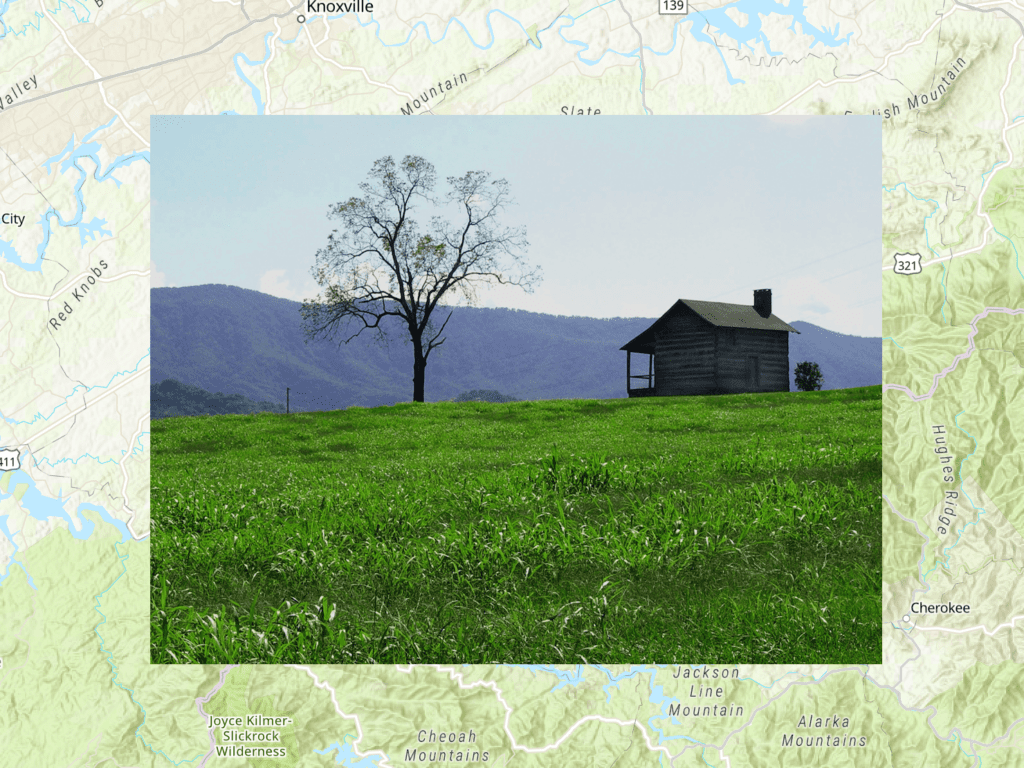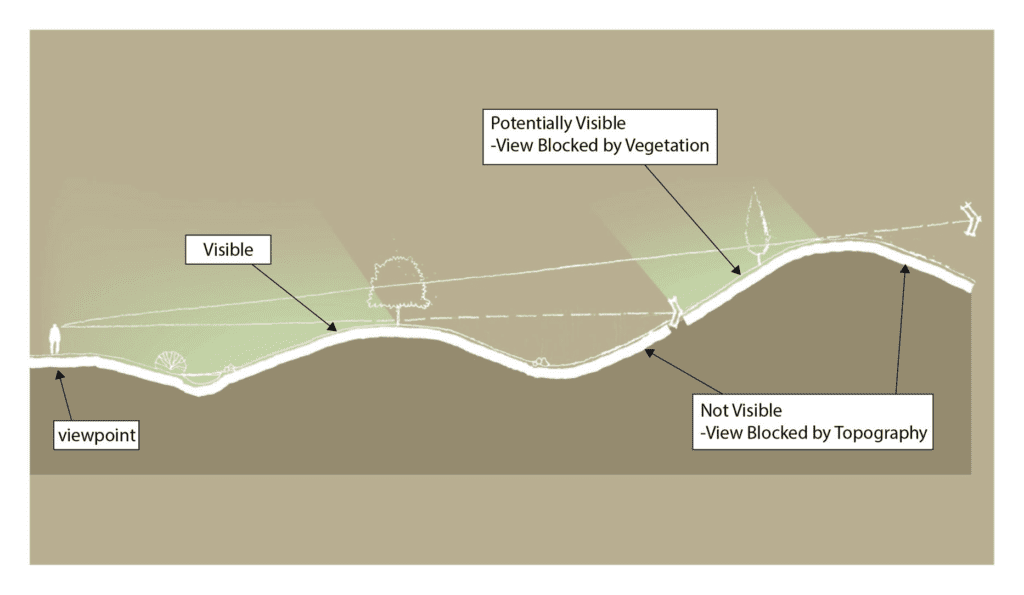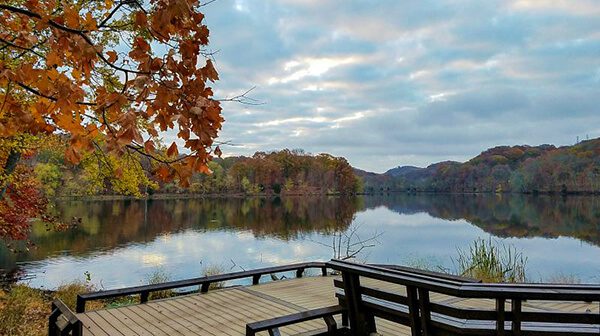

Project objectives
Tennessee Vistas seeks to:
- Ensure the integrity and future of Tennessee’s most outstanding scenic views, especially those not previously recognized or protected.
- Increase awareness among all Tennesseans of the enormous value—aesthetic and emotional as well as economic and environmental—of Tennessee’s scenic views.
- Engage citizens, organizations and local governments in identifying, ranking and documenting the views they consider essential to the character, history, economy and quality of life in their community or region.
- Provide a readily accessible online resource for use in comprehensive planning and land-use decision-making, as well as in tourism, marketing, economic development, environmental protection and conservation education.
- As needed, provide guidance and resources in land preservation strategies, visual resource management and visual impact mitigation.

What is a viewshed?
Simply put, a viewshed is what you can see when you look out from a particular point, typically though not necessarily at a considerable distance. Here’s a definition and schematic from the Virginia Scenic Viewshed Assessment Project: Literature Review and Assessment Methodology (you can download it here):
The term “viewshed” is derived from the concept of a watershed. A watershed is an area in which all of the rainfall that falls will flow past a specific point. A viewshed is “the 360‐degree area” that is seen from a specific point, called a viewpoint. Portions of the area may not be visible from the viewpoint because the view is blocked by vegetation, topography, or other objects.
Patrick Miller et al, Virginia Scenic Viewshed Assessment Project: Literature Review and Assessment Methodology, 2019

The authors go on to note that when we talk about a viewshed, we’re usually talking about a specific slice of that 360-degree pie. Strictly speaking, this is a “defined viewshed”—what we see when we look in a given direction. For our purposes, therefore, whenever we use the term viewshed, we are talking about a defined viewshed.
What is a viewshed register?
The term “viewshed register” is fairly new, having been coined by the Virginia Scenic Viewshed Assessment Project in 2019, but in general it refers to the “cream of the crop” of a given region’s scenic views as determined by visual-assessment tools and public review. While the information in a viewshed register may be presented in various formats, including spreadsheets and written reports, the most common means of access to the Tennessee Scenic Viewshed Register will be online, by clicking on any of the data points on the cloud-based ArcGIS map developed and hosted by the state’s STS-GIS office.

Why does Tennessee need a viewshed register?
Tennessee has grown by more than a million residents since 2000 and is projected to add a million more by 2040. With such growth comes pressure: pressure to subdivide family farms, build utility lines along scenic ridges, turn beloved open space into schools and shopping malls. Without advocacy, private endowments or proactive planning, it’s hit or miss whether such resources will be around 20 years from now, let alone into the next century.
Consider Nashville’s Radnor Lake, Savage Gulf, Overton Park in Memphis, even Ryman Auditorium and the Great Smoky Mountains themselves. Most of us take these scenic beauties for granted today, but there was a time when they were at serious risk from development, urban sprawl, road building, mining and other encroachments.
All of these places were ultimately preserved, of course, thanks to the collective rallying of citizens, organizations, businesses, governments and lawmakers. But the process was often fraught with political tensions, fundraising deadlines and legal complications. Meanwhile, countless other views were lost for lack of advocates to protect them, or even to identify them as worthy of protection.
This is why Tennessee needs the Tennessee Vistas project: to get a jump on the inevitable demands of growth by identifying scenic views judged by local communities to have such exceptional natural or cultural qualities that losing them would be an unacceptable loss—to the surrounding community, to regional economies, to historic integrity, to environmental quality, to recreational opportunities or to spiritual and emotional well-being—and then making this information freely available to communities to act on if and when they choose.
This last point is important: Tennessee Vistas will not mandate any action, limit any freedoms or impose any protected status. The actions it may inspire—for instance, to create conservation easements, form new land trusts, expand comprehensive plans or apply thoughtful mitigation techniques when development is necessary or inevitable—are entirely up to elected officials, public agencies, citizen advocates and private interests. The Tennessee Scenic Viewshed Register will be there if they need it.
Tennessee Vistas will not mandate any action, limit any freedoms or impose any protected status.








